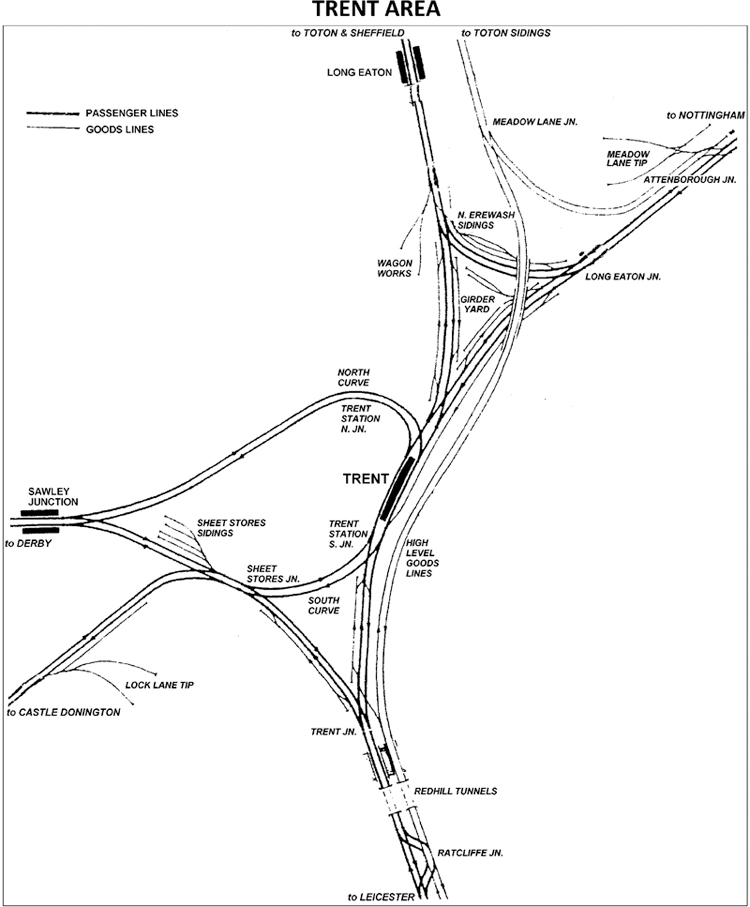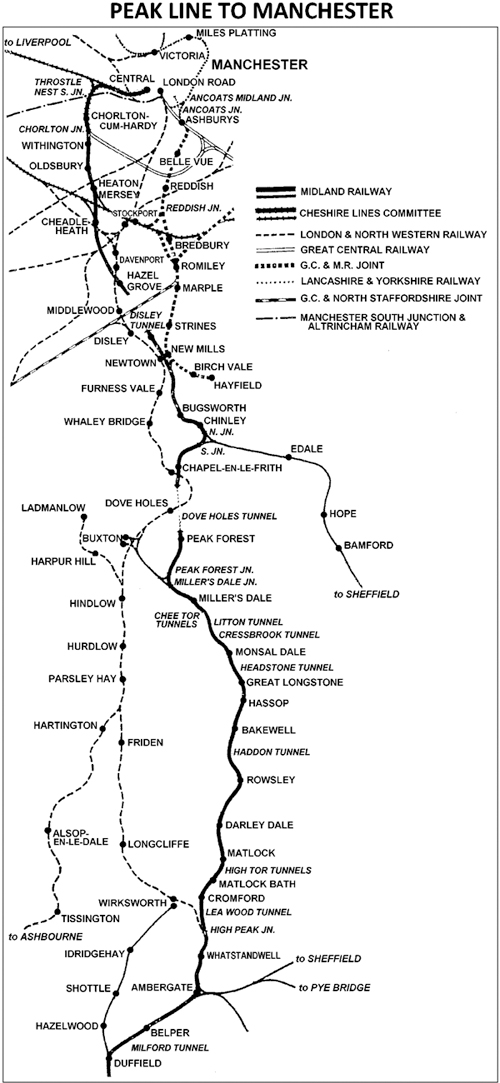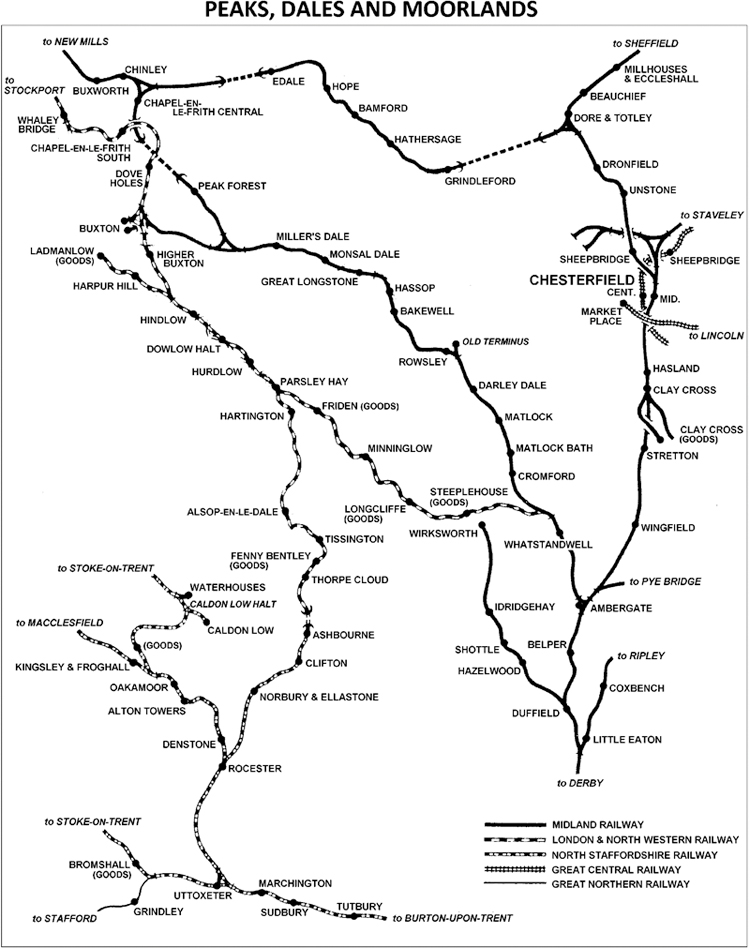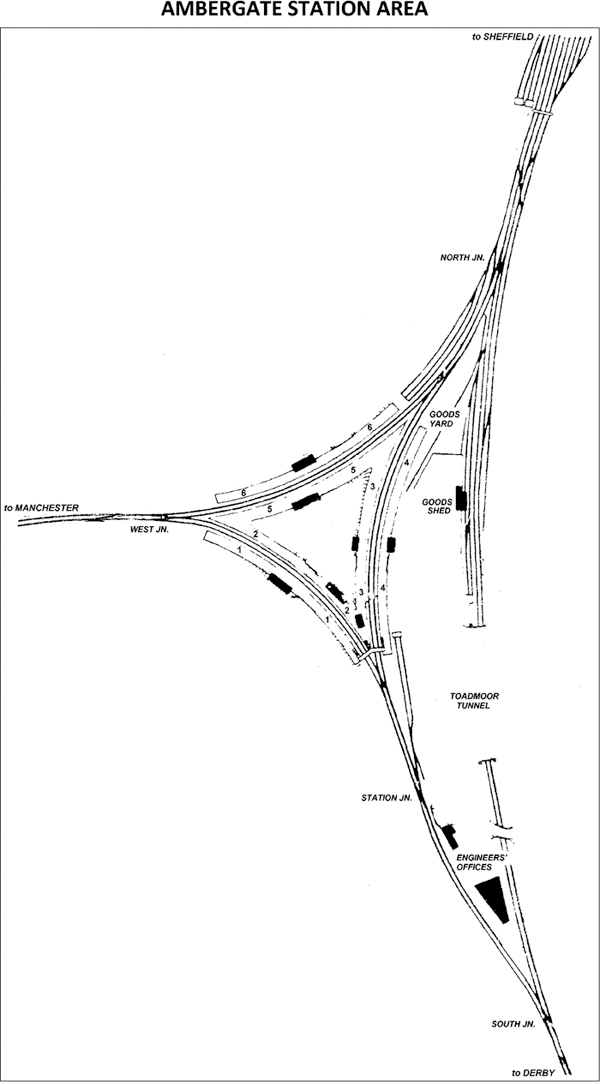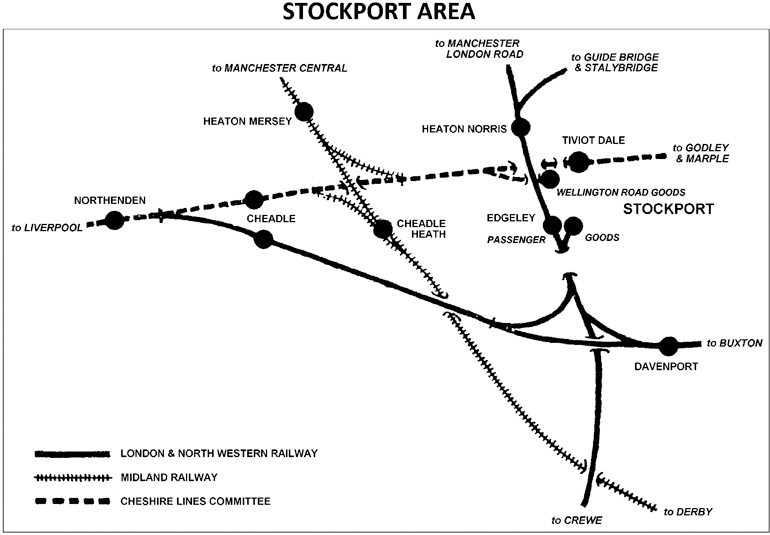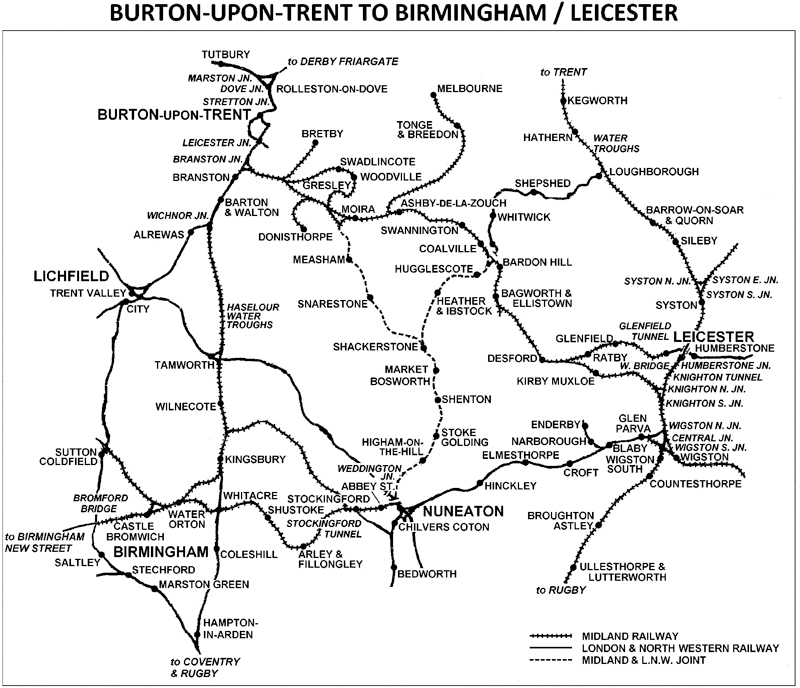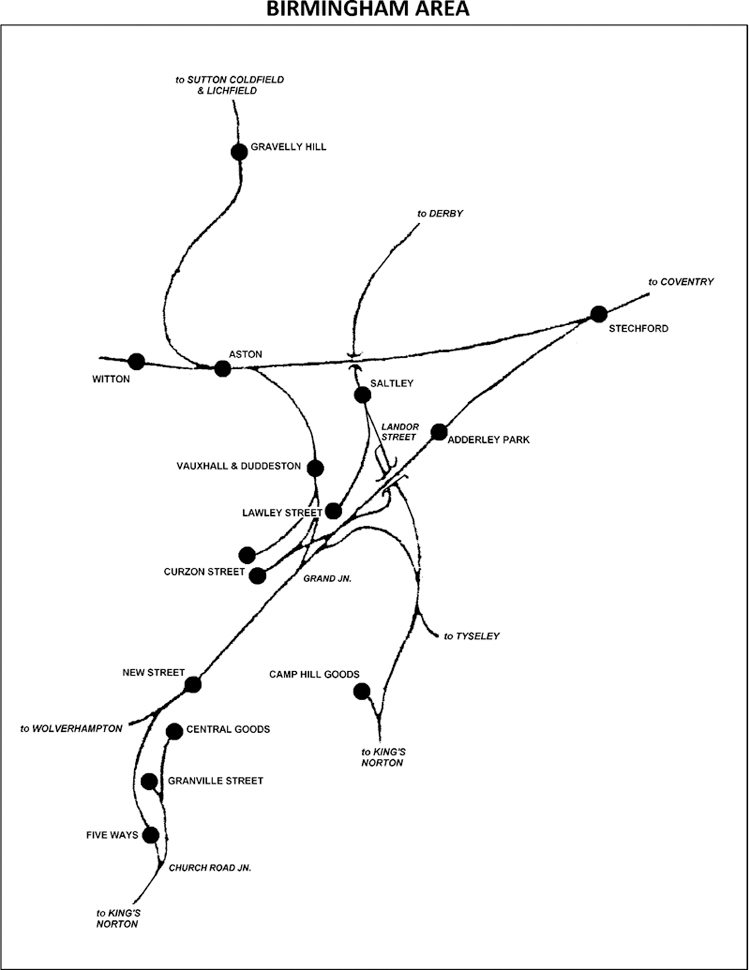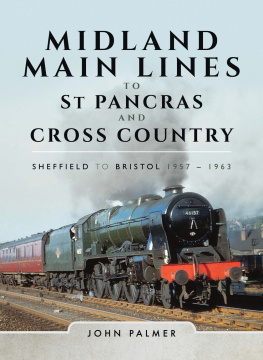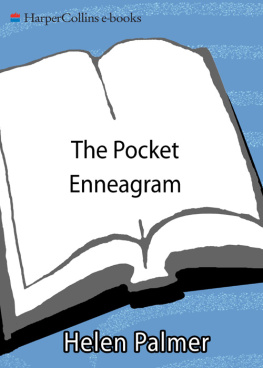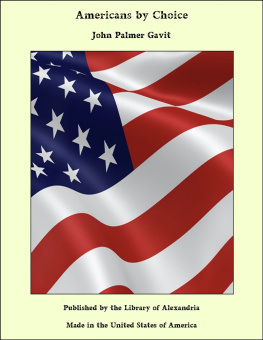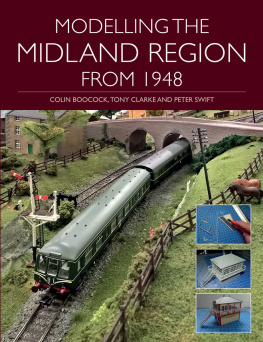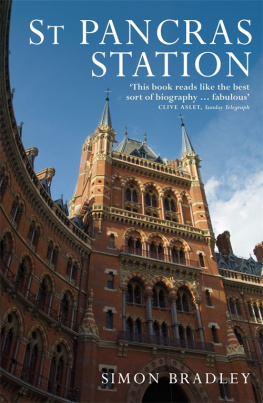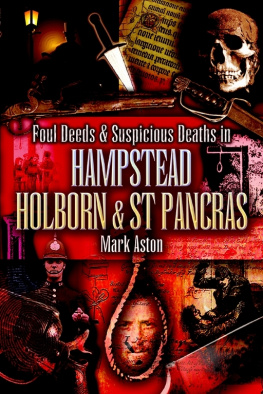
Midland Main Lines to St Pancras and Cross Country
Sheffield to Bristol 19571963
Midland Main Lines to St Pancras and Cross Country
Sheffield to Bristol 19571963
John Palmer
First published in Great Britain in 2017 by
Pen & Sword Transport
an imprint of
Pen & Sword Books Ltd
47 Church Street
Barnsley
South Yorkshire
S70 2AS
Copyright John Palmer 2017
ISBN 978 1 47388 557 8
eISBN 978 1 47388 559 2
Mobi ISBN 978 1 47388 558 5
The right of John Palmer to be identified as the Author of this Work has been asserted by him in accordance with the Copyright, Designs and Patents Act 1988.
A CIP catalogue record for this book is available from the British Library
All rights reserved. No part of this book may be reproduced or transmitted in any form or by any means, electronic or mechanical including photocopying, recording or by any information storage and retrieval system, without permission from the Publisher in writing.
Front cover: photograph taken in 1961 at Heeley, Sheffield shows a cross country train hauled by a Royal Scot locomotive. David Marriott
Pen & Sword Books Ltd incorporates the imprints of Pen & Sword Archaeology, Atlas, Aviation, Battleground, Discovery, Family History, History, Maritime, Military, Naval, Politics, Railways, Select, Transport, True Crime, and Fiction, Frontline Books, Leo Cooper, Praetorian Press, Seaforth Publishing and Wharncliffe.
For a complete list of Pen & Sword titles please contact
PEN & SWORD BOOKS LIMITED
47 Church Street, Barnsley, South Yorkshire, S70 2AS, England
E-mail:
Website: www.pen-and-sword.co.uk
Acknowledgements
R esearching and writing this book has given me considerable pleasure over a period of three years. Along the way I have been fortunate to find individuals who have given their time to respond to my requests; maybe a confirmation of a perceived fact, recollections of practices from some sixty years ago, photographs taken at particular locations or the depot to which certain locomotives were allocated at a particular date.
In particular I would like to thank the following:
Steve Leyland who painstakingly identified locomotive allocations for motive power depots of particular interest and also for locomotives rarely seen along the routes and therefore of great interest. Chris Holmes who has helped considerably with the production of maps. Don Magson of the British Transport Pensioners Federation, Tyseley Branch for information relating to workings from Aston depot. Alan Butler and Alan Binder who added detail to information concerning workings at Bromsgrove and Saltley respectively. Pat Heydon who provided information from his father concerning the Cromford and High Peak railway and an incident at Hazel Grove. Geoffrey Morris, Leslie Askin and Alan Grice who provided detail for The Human Element.
The photographers and holders of collections:
David Postle at Kidderminster Railway Museum
Paul Chancellor of Colour-rail
Jeremy Suter (E.R. Morten)
Midland Railway Trust Ltd Photo Archive
Phil Waterfield
David Marriott (with assistance of Rhys Jones)
John Carter
Keith Platt
Bob Jones
National Railway Museum (John F. Henton collection) Tessa Johnson and Karen Proudler for their patience in accepting and processing the manuscripts as provided and on many occasions later revised.
Maps of the Routes
T o assist all readers, but particularly those who do not have a knowledge of railway geography, a selection of maps has been included.
In summary the maps are of:
an overview of the main routes
the Derby/Nottingham/Burton areas
the Trent area
Derby and Trent to Sheffield (via Ambergate and via the Erewash Valley route to Clay Cross)
the Peak line to Manchester via Peak Forest
Peaks, Dales and Moorlands routes (including the Cromford and High Peak)
the Ambergate station area
the Stockport area
Burton-upon-Trent to Birmingham and to Leicester
the Birmingham area
Birmingham area to Bristol
the Bristol area
Nottingham to Leicester and Kettering (via Edwalton and via Trent)
Leicester to Bedford overview
the Midland (Railway) extension from Bedford towards St Pancras
the final approach to St Pancras.
With over 400 route miles and a history of up to 125 years covered in the book some compromises had to be reached. The end result has been to include as much detail as is relevant for the references made in the various chapters. The maps should enable readers to follow the specific routes taken by particular trains of interest; for example the trains diverted away from the Manchester (London Road)Euston route and the excursions for visitors to the new cathedral at Coventry. In particular areas, for example along the NottinghamSheffield route, there were other railways which featured strongly (for example the former Great Central), but because they were not directly featured in more than a passing way in this book the relevant map does not show them. By Act of Parliament (1865) railway companies were obliged to display distances along their routes in miles and quarter miles from an originating point. Nowadays these posts can still be seen to one side of the tracks and are painted yellow with numerals in black. From 1907 the Midland Railway adopted a standard approach and for the Derby to Bristol line milepost 0 can be seen at the west end of Derby station. The Midland (with a network of alternative routes) always indicated the shortest distance to its route destination so, for example, London to Sheffield via Sharnbrook Summit, Kettering, Leicester, Trent, Clay Cross and Dronfield (and not, for example, from Trent to Clay Cross via Derby and Ambergate) and, because 1907 was the date applicable, the slightly shorter route between Derby and Birmingham by use of the chord between Kingsbury and Water Orton post dated it by two years and was, therefore, not taken into account.


